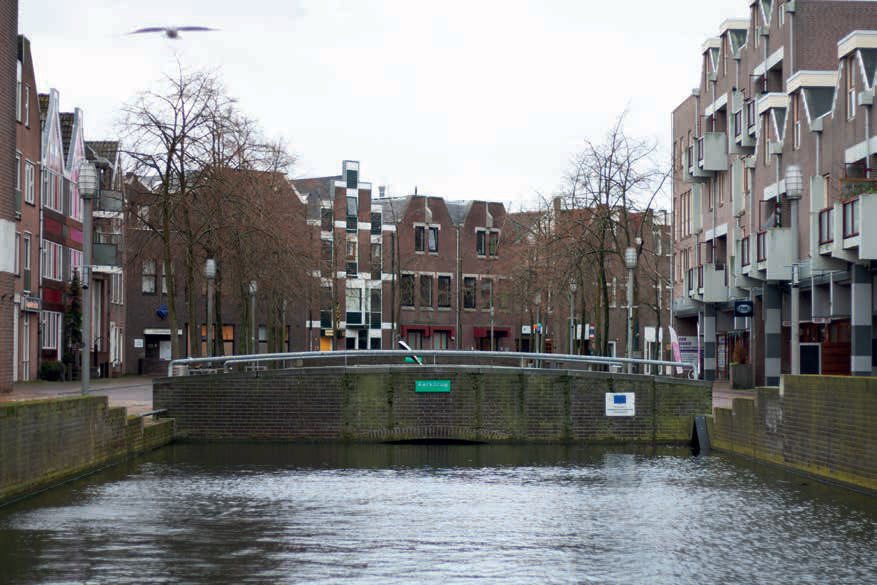The dwelling as a mass product
Authenticity in post-war housing estates
DOI:
https://doi.org/10.48003/knob.119.2020.4.703Downloads

Abstract
From the 1960s, Dutch mass housing construction was for a while dominated by modernism. Housing developments shot up in double quick time – after the existing cultural landscape had first been totally erased. In both typology and architecture, planners and architects strove to avoid any sense of continuity between these new estates and their predecessors: architecture was no more than the expression of function by means of material and technology. The following period saw the construction of housing estates that didn’t really want to be housing estates, aspiring instead to be a Zuiderzee town (Almere Haven), a collage of contrived themes (Kattenbroek in Amersfoort), or a Dutch canal city (Brandevoort in Helmond). Clearly, there can be no question of authenticity when such identities are arbitrarily pasted on.
Perhaps we should conclude that only those housing developments that do not aspire to be anything other than what they are – housing developments – are authentic: which is to say, the hardcore modernist housing estates of the 1960s. So one may well ask whether, in this context, the term authenticity has any meaning at all after the modernist period. But that need not be a problem because on another point the modernists have been proved right: a new-build dwelling is an interchangeable mass product, even in postmodern times.
References
J. Nycolaas, Volkshuisvesting. Een bijdrage tot de geschiedenis van woningbouw en woningbouwbeleid, Nijmegen 1974; P. de Ruijter, Voor volkshuisvesting en stedebouw, Utrecht 1987; H. van der Cammen en L. de Klerk, Ruimtelijke ordening. Van grachtengordel tot Vinexwijk, Utrecht 2003; C. Wagenaar, Town planning in the Netherlands since 1800. Responses to Enlightenment Ideas and Geopolitical Realities, Rotterdam 2011.
Zie bijvoorbeeld: A. Blom (red.), Atlas van de wederopbouw, Nederland 1940-1965. Ontwerpen aan stad en land, Rotterdam 2013; N.A. de Boer en D. Lambert, Woonwijken. Nederlandse stedebouw 1945-1985, Rotterdam 1987; V. van Rossem, Het Algemeen Uitbreidingsplan van Amsterdam. Geschiedenis en ontwerp, Rotterdam 1993.
J. Berg, S. Franke en A. Reijndorp (red.), Adolescent Almere. Hoe een stad wordt gemaakt, Rotterdam 2007; R. Steenhorst, Almere. Een stad zonder verleden, Zaltbommel 1981.
C. Weeber, ‘Formele objectiviteit in stedebouw en architectuur als rationele planning’, Plan 10 (1979) 11, pp. 26-35; U. Barbieri, ‘De nieuwe truttigheid is dood, wat nu?’ Plan 10 (1979) 11, pp. 40-47; M. Ubink en T. van der Steeg, Bloemkoolwijken. Analyse en perspectief, Amsterdam 2011.
H. Hekkema, Kattenbroek. Een woonwijk in Amersfoort, Amersfoort 1996, 7; N. de Vreeze, Lange lijnen in de stadsontwikkeling. De ontwikkeling van Amersfoort 1945-2010, Bussum, 2012.
G. van Hooff en L. van Lieshout, Helmond. Doorsneden in tijd en ruimte, Utrecht 2006; U. Ozdemir e.a., Brandevoort 2006-2010, Helmond 2010.
G. de Bruin, ‘Den Haag versus Staats-Brabant. IJzeren vuist of fluwelen handschoen?’, BMGN-Low Countries Historical Review 111 (1996) 4, 449-463.
Zie: J.E. Abrahamse, Y. van Mil en R. Rutte, ‘1950-2010 – Explosieve groei: welvaartsstaat, autowegen en sterke toename van het bebouwde oppervlak’, in: R. Rutte en J.E Abrahamse (red.), Atlas van de verstedelijking in Nederland. 1000 jaar ruimtelijke ontwikkeling, Bussum 2014, 236-257 en de daar aangehaalde literatuur.
Published
How to Cite
Issue
Section
Articles
License
Copyright (c) 2020 Jaap Evert Abrahamse, Reinout Rutte

This work is licensed under a Creative Commons Attribution 4.0 International License.





